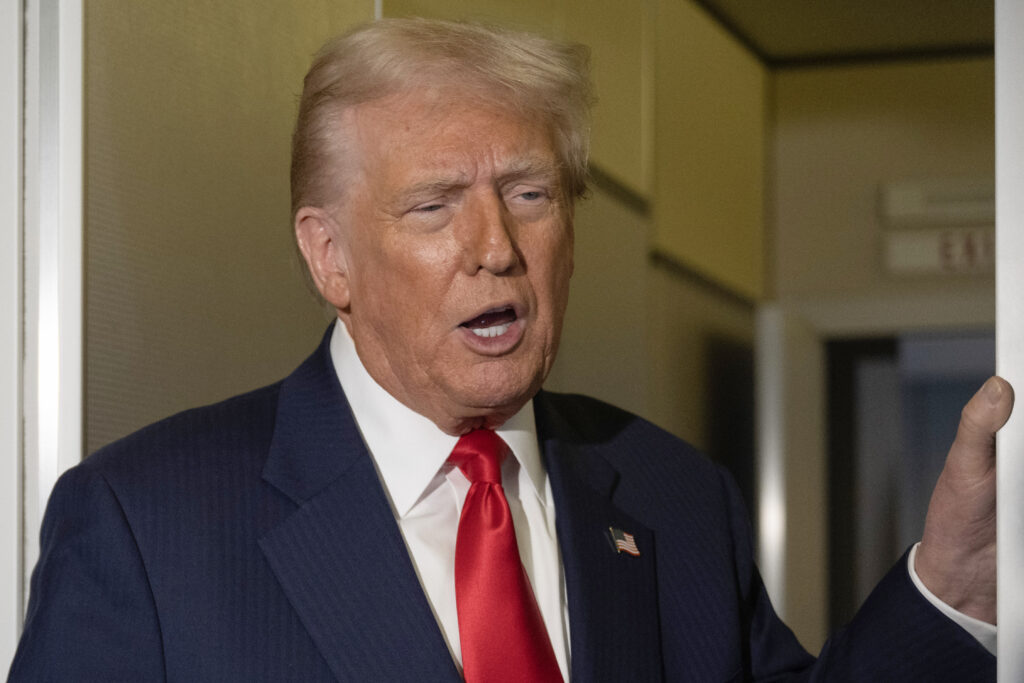Fire, fury and the ‘n-word’: Trump’s nuclear obsession
In his first term as US president, Donald Trump reportedly suggested nuking hurricanes. In his second he has caused fresh concern by ordering the Pentagon to start nuclear weapons tests.His latest remarks, made minutes before a landmark meeting with Chinese President Xi Jinping, follow a pattern of deeply contradictory signals about atomic bombs.One day Trump talks about making a deal with Russia and China to give up their arsenals. The next he appears — though no one is sure — to be talking about overturning a three-decade halt on testing.But the subject also appears to fascinate him.Barely a speech goes by without him addressing the destructive power of nuclear weapons with a kind of awe that befits a 79-year-old who grew up during the Cold War.”It’s been on his mind since the 80s. He wants to solve this issue,” Daryl Kimball, executive director of the Arms Control Association, told AFP.”My concern is that his current approach as president is incoherent, inconsistent, and his team is not constructed or managed in a way that can follow through on his best intentions.”- ‘Rocket man’ -The threat — and promise — of nuclear weapons has been a thread through both of Trump’s presidencies.During his first he spent much time and energy on summits with North Korean leader Kim Jong Un — after initially dubbing Kim “Rocket Man” and threatening Pyongyang with “fire and fury like the world has never seen.”Trump’s three encounters with Kim failed to produce any deal with the only country known to have carried out nuclear tests in the 21st century.But the US president has continued to hold out hope of a breakthrough, saying he would have liked to meet Kim during his trip to Asia this week and hailing their “great relationship.”It wasn’t just nuclear proliferation on Trump’s mind in his first term.A report emerged in 2019 that Trump had asked national security officials whether it would be possible to drop an atomic bomb in a hurricane to stop it approaching US shores. Trump said the report was “fake news.” After his return to the White House in January, Trump swiftly rekindled his old obsession.He has repeatedly suggested a deal with Russia and China for “de-nuking,” and in February even suggested an extraordinary three-way summit with Xi and Russian President Vladimir Putin on the subject.”There’s no reason for us to be building brand new nuclear weapons,” Trump told reporters at the time. “We already have so many you could destroy the world 50 times over, 100 times over.”- ‘Madman’ theory -Yet at other times he has rattled the nuclear saber. Discussing his recent decision to deploy two US submarines after what he said were nuclear threats by former Russian president Dmitry Medvedev, Trump even referenced a racial slur.”I call it the n-word. There are two n-words and you can’t use either of them,” Trump said in a speech to top US military officers in September.Trump’s comments ordering the Pentagon to “start testing our Nuclear Weapons on an equal basis” with Russia and China have, however, caused unusual confusion and alarm.Why would Trump talk about restarting full tests? It was possible that Trump was using the “madman” theory of bold threats to coerce adversaries into deals — an approach he has often relied on in trade and other negotiations, said Kimball, the arms control expert.But he added that “for the president to make such provocative, ambiguous statements is irresponsible and dangerous and frankly incompetent.” Kimball compared the situation to the recently released movie “A House of Dynamite,” a nuclear thriller in which a US president faces the dilemma of how to respond to a lone missile strike as he evacuates Washington in his helicopter.Trump, he pointed out, “is the same guy who would be sitting on Marine One.”









